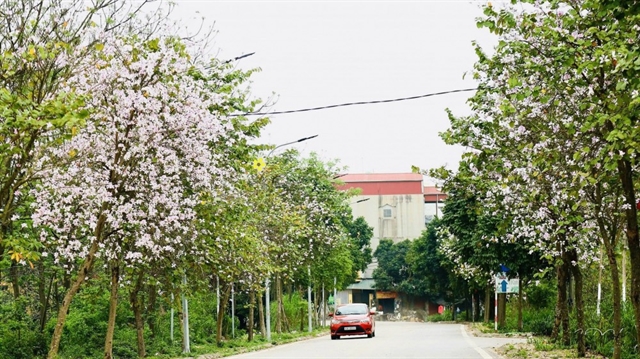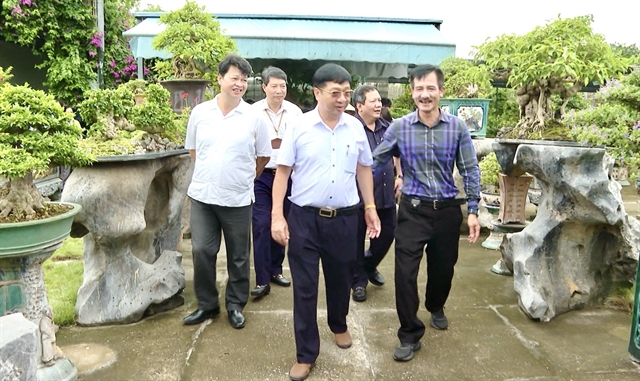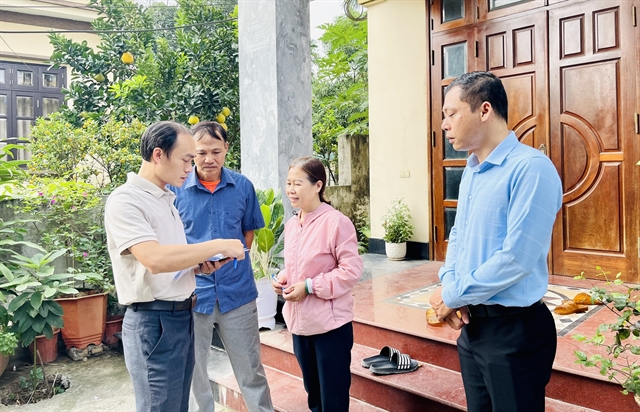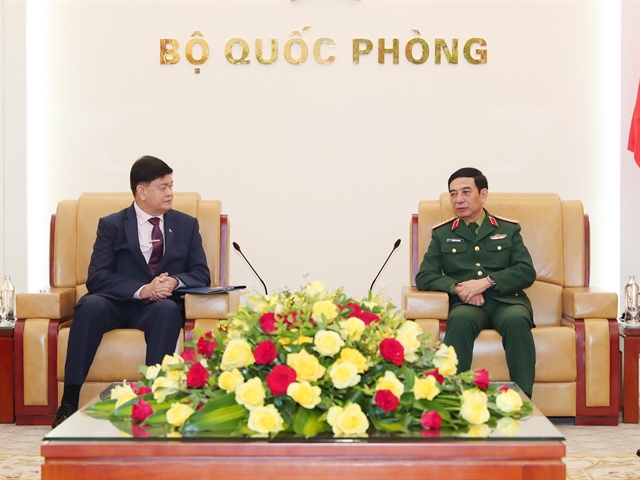 Society
Society

 |
| A comprehensive model of new-style rural areas in Yên Mỹ Commune, Thanh Trì District.— Photo Thanh Hồng |
HÀ NỘI — Hà Nội continues to enhance the quality of its rural development criteria, aiming to establish comprehensive model new-style rural areas in tandem with smart rural development, thereby improving both the material and spiritual well-being of its residents.
In comparison to previous standards for new-style rural areas and enhanced new-style rural areas, model new-style rural areas require increasingly rigorous criteria in both quantity and quality.
Deputy Chairman of the People’s Committee of Đại Áng Commune in Thanh Trì District, Nguyễn Văn Hưng, said that following its recognition as an enhanced new-style rural area in 2022, the Party Committee of the commune organised meetings, passed resolutions and focused on improving the quality of criteria with the goal of achieving model new-style rural area status.
Adhering to the motto 'Do it right the first time' the commune had developed a plan with a specific roadmap for each task and completion time for each village.
The commune allocated specific tasks to each member, regularly monitored progress and listened to the opinions and desires of residents to address issues promptly during implementation.
Furthermore, the communed effectively implemented the principle of: 'People know, people discuss, people implement, people monitor and people benefit', adhering to democratic, open and transparent practices across all work.
As a result, community consciousness and public awareness had been heightened, fostering democracy in line with the spirit and content of new-style rural area development efforts.
In Yên Mỹ Commune, Thanh Trì District, Trần Quang Khánh, Secretary of the commune’s Party Committee, said that the commune was concentrating on improving the quality of its model new-style rural area criteria.
Notably, Yên Mỹ was focusing on developing trade, tourism and services as key economic sectors, creating numerous jobs and promoting the development of specialised agricultural economies alongside tourism services.
 |
| Nguyễn Văn Chí, Deputy Director of the city’s Coordination Office of the New-Style Rural Development Programme leads a working delegation to check the implementation of comprehensive new-style rural area in in Yên Mỹ Commune, Thanh Trì District.— Photo Thanh Hồng |
Yên Mỹ is aiming to become an urban district and an attractive tourist destination in Hà Nội.
Deputy Director of the city’s Coordination Office of the New-Style Rural Development Programme, Nguyễn Văn Chí, said that achieving comprehensive model new-style rural area status was not merely a label, but a condition to enhance all aspects of residents' lives.
Currently, most model new-style rural areas in the city achieved between two and four of the eight criteria.
Therefore, the city’s directive was to intensify the development of model new-style rural areas in communes that had not yet met the standards.
For those already achieving model new-style rural area status, but not comprehensively, further investment was required to meet all eight criteria, moving towards smart rural development.
First fully model new-style rural areas
Recently, the city officially recognised Đại Áng and Yên Mỹ communes as the first fully model new-style rural areas, meeting all eight criteria.
The criteria consisted of security and order, environment, production, healthcare, culture, education and training, tourism and digital transformation.
According to the coordination office, they were the first comprehensive model new-style rural areas in the city.
 |
| Officials take a survey on people's satisfaction with the construction of comprehensive new-style rural area in Đại Áng Commune, Thanh Trì District.—Photo Minh Hoa |
Deputy Chairman of the People’s Committee of Đại Áng Commune, Nguyễn Văn Hưng, said that the commune implemented a smart village model in all four villages.
The villages featured numerous production and business establishments where families promoted and sold products and services via e-commerce.
Currently, Đại Áng employs over 2,000 workers in trade, service, industrial and handicraft sectors, he said.
The average income per person was VNĐ75 million (US$3,000) per year and the commune has officially eliminated poverty.
In Nguyệt Áng Village in the commune, known for its historical scholarly achievements, the local population prioritised education and training.
The commune had three public schools, all meeting national standards.
Models such as 'Studious Families' and 'Studious Lineages' were maintained and expanded.
Education and training was also a sector where the locality achieved success in its model new-style rural area development.
In addition, the commune was known for its traditional crafts such as hat-making in Vĩnh Thịnh Village and tailoring in Vĩnh Trung Village.
It also boasted a diverse range of historical and cultural sites, including temples, pagodas and ancestral halls, which were preserved and promoted to attract tourists.
Consequently, in its model new-style rural area development, tourism had also been a notable success.
The commune was changing daily towards a more modern and civilised direction.
In Yên Mỹ Commune, Nguyễn Văn Trà, Secretary of Hamlet 3’s Party Committee, said the commune’s infrastructure had been comprehensively upgraded with many large projects underway, contributing to the transformation of the local landscape and boosting economic development.
Recently, Yên Mỹ also gained recognition as a tourist destination in Hà Nội.
The commune featured several appealing ecological tourism sites such as Vạn An, Hải Đăng, Đầm Tròn, Vườn Chim Việt and hydroponic vegetable gardens. VNS
*The article is published under the coordination of the Coordination Office of the New-Style Rural Development Programme in Hà Nội.




